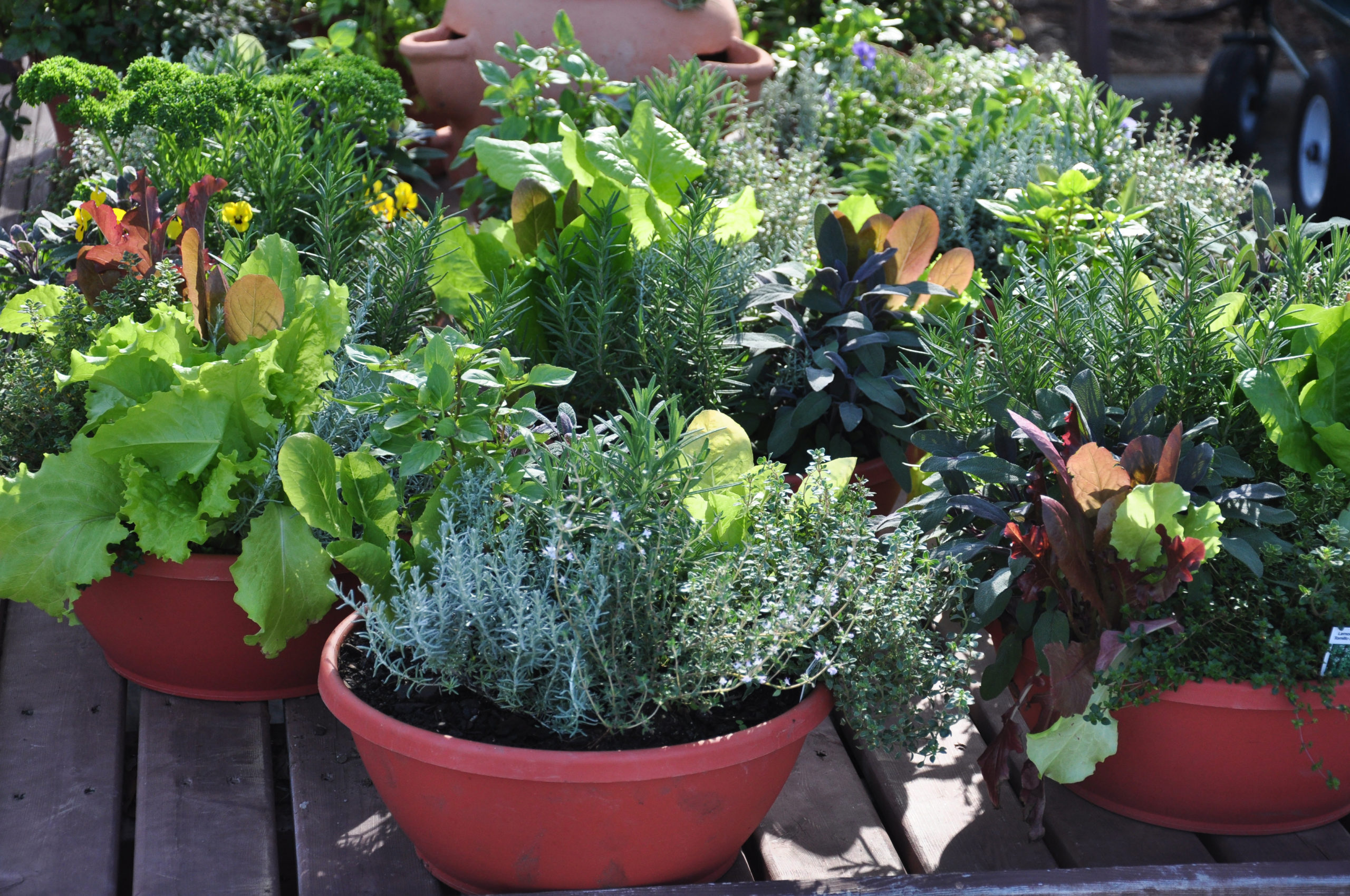GardenZeus Tips for Container Vegetable Gardening

– Container plants are more sensitive to drying soil, especially at warm-and-hot temperatures, which can reduce harvest quality and quantity, shorten the harvest period, and lead to premature bolting. Soils may dry rapidly in containers, so monitoring and regular watering of vegetables and herbs in containers is important. Pay close attention to soil moisture and frequency of irrigation. Most plants and trees are harmed by any wilting. Extended and repeated wilting may be especially damaging. Many vegetables are harmed by water stress at any stage of growth or fruiting.
– Nutrients may be exhausted quickly in containers, particularly for heavy feeders, when containers are densely planted, or plant size is large (3 to 4 times or larger in approximate volume) in comparison to the container. It may be necessary to add compost or nutrient-rich amendments and refresh mulch every month or so when growing in containers.
– Containers allow you to move plants to follow seasonal changes in sun, to shaded areas during heat waves/hot summers, to warmer areas during winter, and to protected areas when necessary in response to winds or other shifting environmental issues. Rolling planters, plant stands, or carts allow for ease in moving container plants without the strain of lifting.
– Check that holes in the bottoms of containers are large and numerous enough to ensure good drainage for nearly all food-producing and ornamental plants, and if necessary, add or enlarge drainage holes.
– GardenZeus recommends a soil mix of at least 2/3 sand and topsoil when growing vegetables in containers, with some organic matter or compost. Potting soils with high proportions of organic matter tend to shrink and collapse over the course of a growing season as soil microbes and macro organisms like insects digest and decompose the organic matter, which results in falling soil levels. The resulting shallow soils in containers may be insufficient for plants to yield well, and may cause stress to plants by drying rapidly or exposing roots.
– Think ahead before planting about vertical growth and support. A trellis or structure for climbing will help many vegetable and ornamental plants to remain manageable, receive enough sunlight, and maximize production in small spaces.
– If you know you may have difficulty maintaining consistent soil moisture, consider using self-watering containers, which have trays or reservoirs of water under pots, and a wicking mechanism, such as cloth or soil tubes. These can be purchased or made yourself.
– Container plants may grow roots down into the soil beneath their containers. This can reduce frequency of watering and increase yields as plants connect to the larger living systems in soil, but also can result in shock to plants as they are uprooted when containers are moved.
– Plants in containers are sensitive to salt burn, especially when they go for months or years without rain. Water that comes out of home faucets and hoses in most urban municipal areas contains minerals to maintain alkalinity in city water and avoid corrosion of pipes and the infrastructure of city water systems. As water evaporates from pots, it leaves minerals behind in soils that can build up and cause burned, dead, brown leaf tips and leaf edges for potted plants (indoors and outdoors). As this progresses and worsens over months and years, it will eventually kill most plants. All indoor and outdoor potted plants should be flushed thoroughly every 2 to 4 months by soaking pots in a bucket, sink, or large container (at below soil level to avoid creating a mess) and then running water through the pots for several minutes. Plants in containers should not need flushing for a few months after being exposed to natural rainfall that thoroughly soaks and drains through the potted soil.
